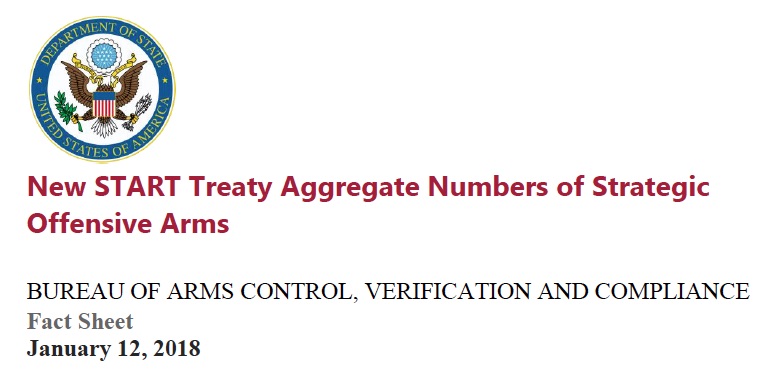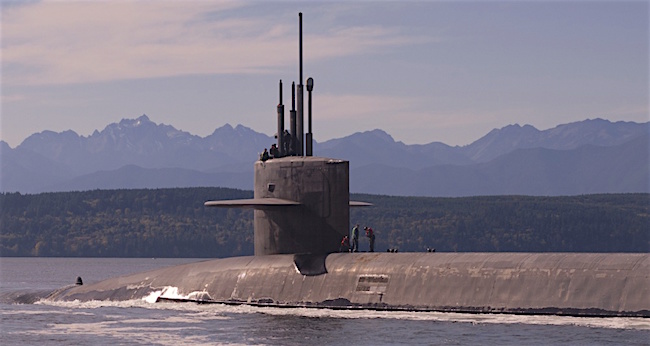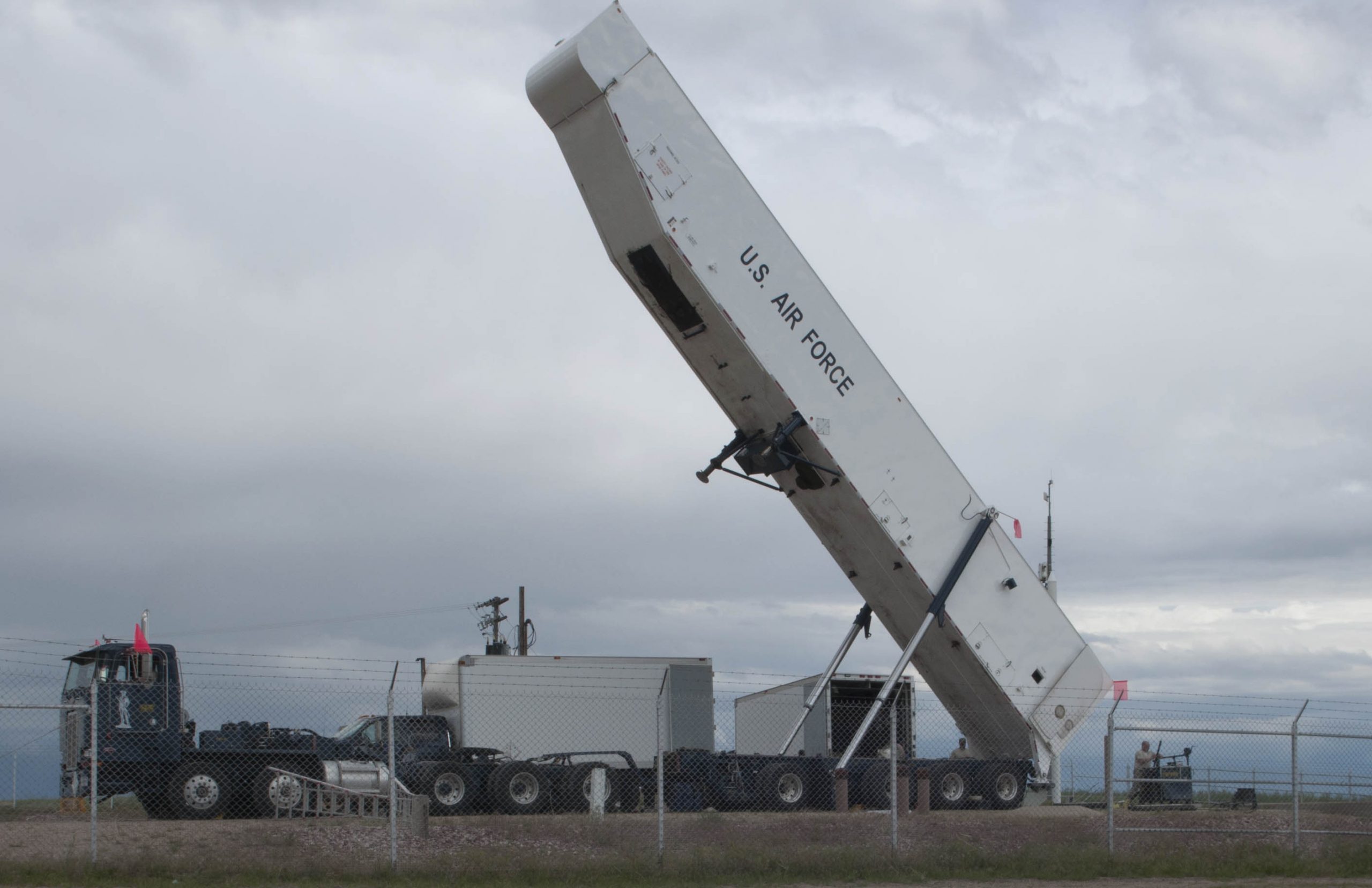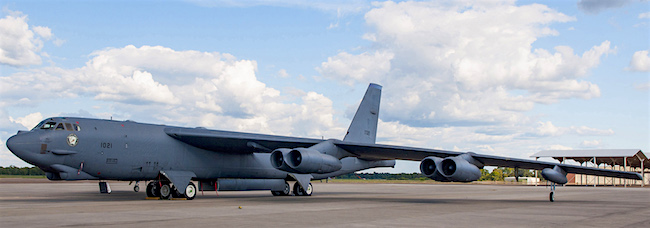New Data Shows Detail About Final Phase of US New START Treaty Reductions

By Hans M. Kristensen
The full unclassified New START treaty data set released by State Department yesterday shows that the US reduction of its nuclear forces to meet the treaty limit had been completed by September 1, 2017, more than four months early before the deadline next month on February 5, 2018.
The data set reveals details about how the final reduction was achieved (see below).
Unfortunately, no official detailed data is released about the Russian force adjustments under New START. Our previous analysis of the overall September 1, 2017 New START data is available here.
Submarines
During that six-month period last year, 20 ballistic missile submarine launch tubes were deactivated, corresponding to four tubes on five Ohio-class submarines. Two of those submarines were in drydock for refueling and not part of the operational force.
In total, the United States has deactivated 56 strategic missile submarine launch tubes since the New START treaty went into effect in 2011, although the first reduction didn’t begin until after September 2016 – more than five years into the treaty.

The USS Louisiana (SSBN-743) returns to Kitsap Submarine Base in Washington on October 15, 2017 after a deterrent patrol in the Pacific Ocean. The submarine carried 20 Trident II missiles with an estimated 90 nuclear warheads.
Of the 280 submarine launch tubes, only 212 were counted as deployed with as many Trident II missiles loaded. The treaty counts a missile as deployed if it is in a launch tube regardless of whether the submarine is deployed at sea. The United States has declared that it will not deploy more than 240 missiles at any time. Assuming each deployed submarine carries a full missile load, the 212 deployed missiles correspond to 10 submarines fully loaded with a total of 200 missiles. The remaining 12 deployed missiles were onboard one or two submarines loading or offloading missiles at the time the count was made.
The data shows that the 212 deployed missiles carried a total of 945 warheads, or an average of 4 to 5 warheads per missile, corresponding to 70 percent of the 1,344 deployed warheads as of September 1, 2017 (the New START count was 1,393 deployed warheads, but 49 bombers counted as 49 weapons don’t actually carry warheads, leaving 1,344 actual warheads deployed). If fully loaded, the 240 deployable SLBMs could carry nearly 2,000 warheads.
The Navy has begun replacing the original Trident II D5 missile with an upgraded version known as Trident II D5LE (LE for life-extension). The upgraded version carries the new Mk6 guidance system and the enhanced W76-1/Mk4A warhead (or the high-yield W88-0/Mk5). In the near future, according to the Trump administration’s Nuclear Posture Review (NPR), some of the missiles would be equipped with a low-yield version of the W76-1.
The Navy is developing a new fleet of 12 Columbia-class missile submarines to begin replacing the Ohio-class SSBNs in the late-2020s. The Trump NPR states that “at least” 12 will be built. Each Columbia-class SSBN, the first of which will deploy on deterrent patrol in 2031, will have 16 missile tubes for a total of 192, a reduction of one-third from the current number of SSBN tubes. Ten deployable boats will be able to carry 160 Trident II D5LE missiles with a maximum capacity of 1,280 warheads; normally they will likely carry about the same number of warheads as the current force, with an average of about 5 to 6 warheads per missile.
ICBMs
The New START data shows the United States now has just under 400 Minuteman III ICBMs in silos, down from 405 in March 2017. Normally the Air Force strides to have 400 deployed but one missile was undergoing maintenance.

A Minuteman III ICBM is removed from its silo at F.E. Warren AFB on June 2, 2017, the last to be offloaded to bring the United States into compliance with the New START treaty limits.
Although the number of deployed ICBMs had declined from 450 to 400, the total numbers of missiles and silos have not. The data shows the Air Force has the same number of missiles and silos as in March 2017 because 50 empty silos are “kept warm” and ready to load 50 non-deployed missiles if necessary. Reduction of deployed ICBMs started in 2016, five years after the New START was signed. And the actual ICBM force is the same size as when the treaty was signed.
The 399 deployed ICBMs carried 399 W78/Mk12A or W87/Mk21 warheads. Although normally loaded with only one warhead each, the Trump NPR confirms that “a portion of the ICBM force can be uploaded” if necessary. We estimate the ICBM force has the capacity to carry a maximum of 800 warheads.
An ICBM replacement program is underway to build a new ICBM (programmatically called Ground Based Strategic Deterrent) to begin replacing the Minuteman III from 2029. The new ICBM will have enhanced penetration and warhead fuzing capabilities.
Heavy Bombers
The New START data shows the US Air Force has completed the denuclearization of excess nuclear bombers to 66 aircraft. This includes 20 B-2A stealth bombers for gravity bombs and 46 B-52H bombers for cruise missiles. Only 49 of the 66 bombers were counted as deployed as of September 1, 2017. Another 41 B-52Hs have been converted to non-nuclear armament such as the conventional long-range JASSM-ER cruise missile.
The New START treaty counts each of the 66 bombers as one weapon even though each B-2A can carry up to 16 bombs and each B-52H can carry up to 20 cruise missiles. We estimate there are nearly 1,000 bombs and cruise missiles available for the bombers, of which about 300 are deployed at two of the three bomber bases.

The first B-52H bomber was denuclearized under New START in September 2015. Denuclearization of excess nuclear bombers was completed in early 2017.
The bomber force was the first leg of the Triad to begin reductions under New START, starting with denuclearization of the (non-operational) B-52Gs and later excess B-52Hs. The first B-52H war denuclearized in September 2015 and the last of 41 in early 2017. Despite the denuclearization of excess aircraft, however, the actual number of bombers assigned nuclear strike missions under the strategic war plans is about the same today as in 2011.
A new heavy bomber known as the B-21 Raider is under development and planned to begin replacing nuclear and conventional bombers in the mid-2020s. The B-21 will be capable of carrying both the new B61-12 guided nuclear bomb and the new LRSO nuclear cruise missile. The Air Force wants at least 100 B-21s but can only make 66 nuclear-capable unless it plans to exceed the size of the current nuclear bomber force.
Looking Ahead
With the completion of the force reductions under New START in preparation for the treaty entering into effect on February 5, 2018, the attention now shifts to what Russia and the United States will do to extend the treaty or replace it with a follow-up treaty. With its on-site inspections and ceilings on deployed and non-deployed strategic forces, extending New START treaty for another five years ought to be a no-brainer for the two countries; anything else would increase risks to strategic stability and international security. If the treaty is allowed to expire in 2021, there will be no – none! – limits on the number of strategic nuclear forces. Unfortunately, right now neither side appears to be doing anything except to blame the other side for creating problems. It is time for Russia and the United States to get out of the sandbox and behave like responsible states by agreeing to extend the New START treaty. February 5 – when the treaty enters into effect just 23 days from now – would be a great occasion for the two countries to announce their decision to extend the treaty.
This publication was made possible by a grant from the Carnegie Corporation of New York, the John D. and Catherine T. MacArthur Foundation, the New Land Foundation, and the Ploughshares Fund. The statements made and views expressed are solely the responsibility of the author.
The FY2026 National Defense Authorization Act (NDAA) paints a picture of a Congress that is working to both protect and accelerate nuclear modernization programs while simultaneously lacking trust in the Pentagon and the Department of Energy to execute them.
While advanced Chinese language proficiency and cultural familiarity remain irreplaceable skills, they are neither necessary nor sufficient for successful open-source analysis on China’s nuclear forces.
Satellite imagery has long served as a tool for observing on-the-ground activity worldwide, and offers especially valuable insights into the operation, development, and physical features related to nuclear technology.
This report outlines a framework relying on “Cooperative Technical Means” for effective arms control verification based on remote sensing, avoiding on-site inspections but maintaining a level of transparency that allows for immediate detection of changes in nuclear posture or a significant build-up above agreed limits.